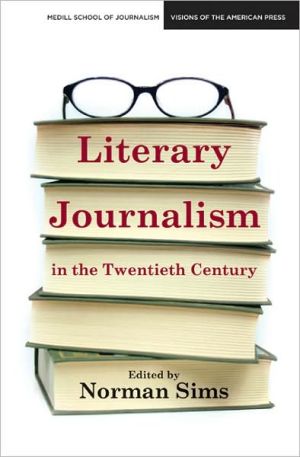

 |

|

Sold Out
Book Categories |
In 1953, Mary McCarthy published an article in Harper's entitled "Artists in Uniform" telling the story of a woman who encountered an anti-Semitic colonel on a train. Readers approached the tale as fiction, finding symbolic meaning in everything from what the Colonel ate to the clothes the woman wore. Soon after its appearance, McCarthy wrote a sequel called "Settling the Colonel's Hash" in which she explained that "there were no symbols in this story; no deeper level": it had been simply a fragment of memoir. But critics immediately took issue with McCarthy's assumption that two literary arenas exist—that there is a clear difference between autobiographical and fictional narrative—and the incident has become a classic illustration of the fascinating and nebulous borderlands that lie between fact and fiction.
From the experiments of Hutchins Hapgood, W.E.B. Du Bois, James Agee, and Joe Mitchell to the challenges posed by the New Journalists and contemporary literary journalists such as John McPhee, this collection explores the fine line between fiction and nonfiction from both historical and critical perspectives. What motives led Ernest Hemingway to return to extended narrative nonfiction after becoming a successful novelist? Why did John Steinbeck write The Grapes of Wrath as a novel rather than a work of journalism? How does the "plain style" of writers like Swift, Defoe, and Orwell affect the reader's sense of what is true and what is "made up"? In what way does the Mary McCarthy episode illuminate the ways in which we approach fiction and nonfiction? Raising a wealth of intriguing questions, Literary Journalism in the Twentieth Century offers a forum for discussion, involving the reader in what becomes an active definition of literary journalism. The book assembles essays by such well-known critics as Tom Connery, Ron Weber, William Howarth, Norman Sims, John Pauly, Shelley Fisher Fishkin, Hugh Kenner, David Eason, Kathy Smith, and Darrel Mansell. Lively and unique, Literary Journalism in the Twentieth Century concerns the very essence of literature itself, showing how writers have reshaped styles to permit passage across the borders between fact and fiction, in the process investigating what these borders might be, and if they exist at all.
Login|Complaints|Blog|Games|Digital Media|Souls|Obituary|Contact Us|FAQ
CAN'T FIND WHAT YOU'RE LOOKING FOR? CLICK HERE!!! X
 You must be logged in to add to WishlistX
 This item is in your Wish ListX
 This item is in your CollectionLiterary Journalism in the Twentieth Century
X
 This Item is in Your InventoryLiterary Journalism in the Twentieth Century
X
 You must be logged in to review the productsX
 X
 X

Add Literary Journalism in the Twentieth Century, In 1953, Mary McCarthy published an article in Harper's entitled Artists in Uniform telling the story of a woman who encountered an anti-Semitic colonel on a train. Readers approached the tale as fiction, finding symbolic meaning in everything fr, Literary Journalism in the Twentieth Century to the inventory that you are selling on WonderClubX
 X

Add Literary Journalism in the Twentieth Century, In 1953, Mary McCarthy published an article in Harper's entitled Artists in Uniform telling the story of a woman who encountered an anti-Semitic colonel on a train. Readers approached the tale as fiction, finding symbolic meaning in everything fr, Literary Journalism in the Twentieth Century to your collection on WonderClub |